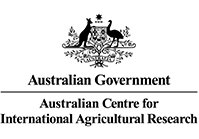
Pacific Pests, Pathogens & Weeds - Mini Fact Sheet Edition
Formosan subterranean termite (440)

Summary
- Widespread. Asia, Africa (South Africa), North America (including Hawaii), the Caribbean (US Virgin Islands), Oceania. In Marshall Islands.
- Serious invasive pest. Large colonises and damage happens quickly. Attacks on living trees and buildings cause loss of native diversity, a need for expensive treatments, and increased pesticide use.
- Colonies contain kings and queens (sexually mature males and females), i.e., ‘reproductives’ (winged, yellow-brown bodies, golden-brown heads, 12-15 mm); soldiers (whitish, 4-5 mm long, orange-brown oval heads - exude defensive glue-like fluid, pincer-like mouthparts); workers (whitish, collect cellulose, build nests, feed larvae).
- Reproductives swarm briefly, females lay eggs in moist holes or crevices, and care for them. Later, more eggs and workers take over. Colony expands, many millions, then 5-7 years later reproductives swarm again. Ususal food is living and dead trees; more recently invaded towns and cities to feed on building timbers.
- Spread with wooden cargoes on ships (pallets, telephone poles, rail sleepers, soil, and more).
- Biosecurity: listed by IUCN among 100 of World's Worst Invasive Species. National legislation and awareness is needed to prevent its introduction or further spread.
- Cultural control: restrict movement of wood, plants, soil in infested areas; inspect homes and trees regularly; where practical, allow sunshine into buildings, and free flow of fresh air; practice good hygiene in and around homes; clean drains avoid lingering puddles, and repair any leaks.
- Chemical control: apply building codes to prevent termite infestations; apply toxic insecticides as barriers beneath buildings; use baits (chiton synthesis inhibitors) in monitoring stations around buildings.
Common Name
Formosan subterranean termite
Scientific Name
Coptotermes formosanus. It is also known as Coptotermes intrudens. Coptotermes gestroi is similar (see Fact Sheet no. 384).
AUTHOR Grahame Jackson
Information from CABI (2019) Coptotermes formosanus (Formosan subterranean termite). Crop Protection Compendium. (https://www.cabi.org/cpc); and Su N-Y, Scheffrahn RH (2019) Formosan subterranean termite. Featured Creatures. UF/IFAS. University of Florida. (http://entnemdept.ufl.edu/creatures/urban/termites/formosan_termite.htm); and from Fomosan subterranean termite. Wikipedia. (https://en.wikipedia.org/wiki/Formosan_subterranean_termite). Photo 1 Gerald J. Lenhard, Louisiana State University, Bugwood.org. Photos 2&3 Pest and Diseases Image Library, Bugwood.org. Photos 4&5 Scott Bauer, USDA Agricultural Research Service, Bugwood.org. Photo 6 Wood Product Insect Lab USFS, Gulfport, MS, Bugwood.org. Photo 7. Simon Hinkley & Ken Walker Victorian Museum. In: Walker K (2005) Formosan subterranean termite (Coptotermes formosanus). PaDIL - https://www.padil.gov.au.
Produced with support from the Australian Centre for International Agricultural Research under project HORT/2016/185: Responding to emerging pest and disease threats to horticulture in the Pacific islands, implemented by the University of Queensland and the Secretariat of the Pacific.
This mini fact sheet is a part of the app Pacific Pests, Pathogens & Weeds
The mobile application is available from the Google Play Store and Apple iTunes.




Copyright © 2020. All rights reserved.
 Pacific Pests, Pathogens & Weeds - Mini Fact Sheet Edition
Pacific Pests, Pathogens & Weeds - Mini Fact Sheet Edition